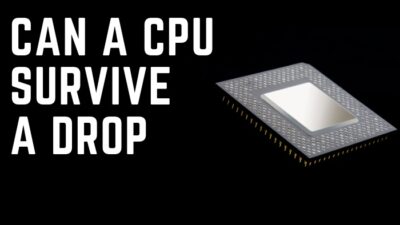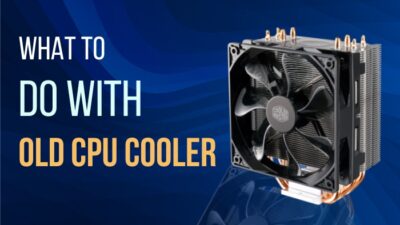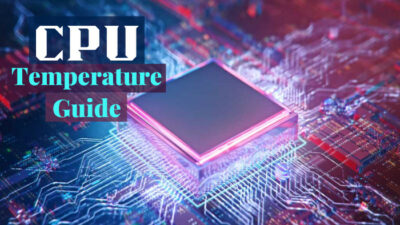You have been using a PC for quite some time. But When you see your motherboard, you find that the CPU sizes stayed the same as before.
So your mind is asking this question “why isn’t the size of the CPU bigger? Why does it stay the same?
I know this filling. I’ve worked in computers for a long time, building new PC from scratch. This question keeps bothering me for quite some time. So I’ve done intensive research on the internet and found the definitive answer.
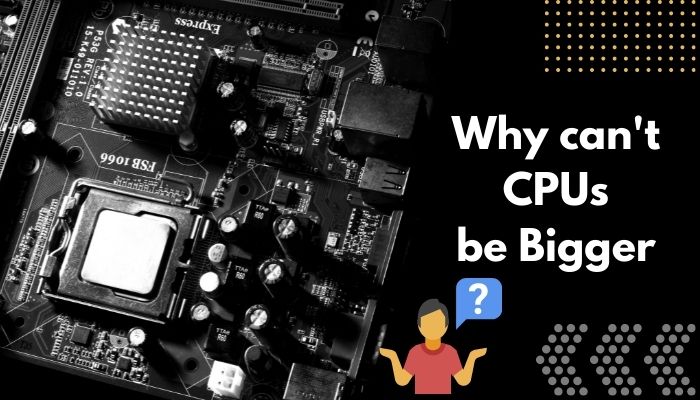
So read this article thoroughly, and you will clear your confusion. Also there are some interesting facts in the article, So read till the end.
Why aren’t CPUs bigger?
So the CPU size is still the same as in 1993. The main reason behind this is to maintain the clock speed and cost-efficiency and also minimize the margin of error.
Like in real life, you can insert a jet engine into a car!!
The car would still work, but it’s overkill because you will need unnecessary fuel to operate the car. And also, you won’t utilize most of the jet engine’s power.
There are both technical and economic reasons behind the CPU size. To maintain both factors, the CPU size is being as the same as it was in the 90s.
Let’s take a moment and have a look at what the CPU look like. Not so big, is it?
Here are the Economical & Technical reasons for CPU size
Economical Reason
The economic reason is based on the company’s cost policy for the CPU size. Every company does business for profit. The processor companies are not different.
Here is the economical reason why CPU size isn’t bigger:
- Firstly the transistor precise isn’t cheap. If you want to make the CPU size bigger, you need to put more transistors, which would be costly.
- And also, the size of the silicon wafer is limited. If you increase the size o your chip, then the number in the silicon wafer will lower.
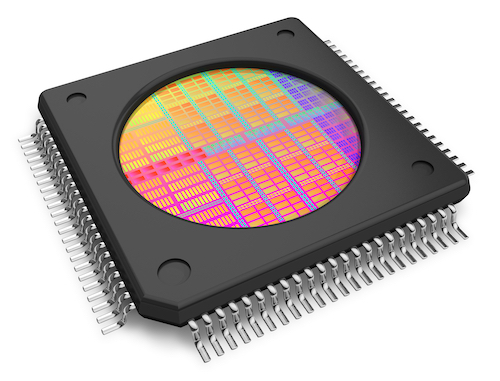
- Finally, If the processer size increases, the company has to release a new motherboard to fit the CPU. That will increases the price.
Most likely, there is a chance that People will decline the whole product. Because any motherboard can support any processor is one of the leading advertising points in CPU marketing.
Technical Reason:
The Technical Reason for CPU size is regarding the performance of the processor. Increasing size doesn’t always increase the performance.
Here, the Technical Reasons for CPU size are explained :
- If You increase the size of the CPU, the path that data used to follow will also increase so that the CPU will reduce the clock speed.
- A larger CPU will generate more heat, so the overall productivity will be much less.
- Lager CPU fabrication will increase the error in the overall process. Many CPUs become defective for some small error like adding an extra transistor or credit because this small error can make the COU unusable.
Last but not least, the microarchitecture design also restricts the CPU size. Even an end user can check CPU architecture quite easily.
How do Companies Make CPUs?
Companies like Intel & AMD make tons of different CPUs every day. But how? The process starts with sand mining.
Believe it or not, the main ingredient of the CPU You use in your computer is sand.
However, I am not referring to that sand you see on the beach. This sand is purer than the average. This sand is mined especially for making silicon chips.
After mining, the sand is heated to thousands of degrees and purified by chemicals to make a flawless silicon cylinder.
Quick facts: California’s main tech city is named Silicon Valley for the use of silicon in CPUs.
Silicon that uses in the CPUs needs to be purest so that Companies can make smaller transistors and fit more in the CPU dice, making the processor more powerful.
After the silicon is purified, they cut into wafers. After polishing the silicon wafers, a photosensitive chemical is applied to the wafers. Afterward, a UV ray is applied through a mirror(the mirror is shaped precisely like the wafers).
The ultraviolet ray is applied several times so that the engineers can fit hundreds of CPU dice in a single wafer.
After the UVL process is complete, the silicon wafers are washed in chemicals. For this, the exposed areas are dissolved, and a pattern is created. Then wafers go to another machine that makes the edges and flows a vast amount of ions (Ions are the charged atoms).
Ions mix with silicon wafers and change the way of electricity and by this creates transistors. These transistors only allow the electricity to flow in one direction so that they can perform as gates. These Gates help relay your order, and the CPU is able to understand it.
After this transistor is created, then the next connects them to make a functional processor.
Rigid Copper Interconnectors are used in the processor to connect the transistor. Rigid Copper Interconnectors are basically tiny wires made with copper that are placed on top of the transistor and connect through the same UVL and edging process.
The connection is made in many layers so that any of these wires don’t accidentally touch each other and create a short circuit.
After that, the dice are tased, and the good ones are placed in the CPU package that you plug into your motherboard.
Can you Combine Two CPUs?
Chipset architecture basically combines two or more CPUs together. AMD Epyc and Ryzen lineup processors are good examples of this. This technique blessed end users with powerful multicore CPUs.
In a normal sense, if you use multiple CPUs in the same motherboard, then you should get more power or processing speed. So why don’t we do that?
Actually, in the pre-Pentium days, there were multi CPUs motherboards available. At the time of intel 486SX, there were dual-CPU motherboards were available on the market. But this was a failure in the home user market for its high cost.
However, In the 2000s, some multi-CPU setups become somewhat popular among tech enthusiasts.AMD Athlon MP is one of them; here, MP stands for Malty processor.
It was AMD’s first attempt at a dual-socket platform generally for servers, but it gained positive feedback from the home User. And a small number of systems build around Athlon MP.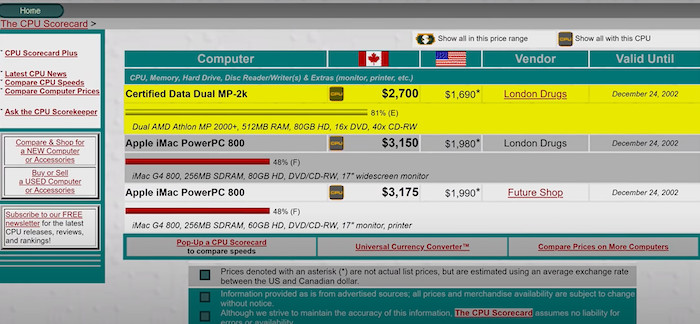
In 2008 intel introduced Intel Skull-trail, which also makes a dual-CPU-based system. Here the motherboard had more features for home users and gamers, like overclocking. Intel marketed Skull-trail as the ultimate gaming platform because of the raw power of 2 CPUs.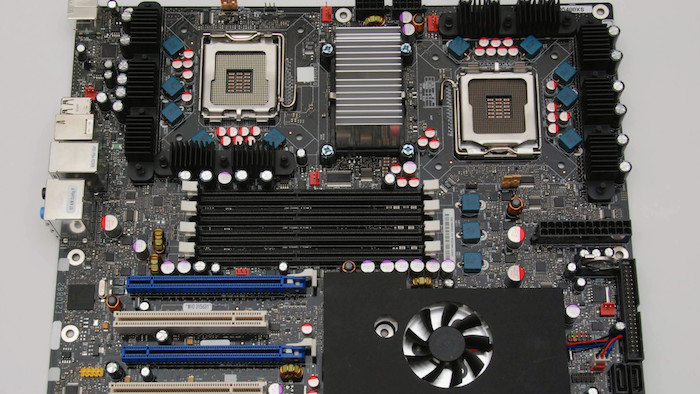
Unfortunately, the platform became a loss because it was extremely costly. Also, the dual CPUs didn’t provide as much gaming benefit as it was marketed.
Similarly, AMD’s Quad FX suffered a huge loss.
These days people generally run dual CPU setup mainly to create a workstation or server. Unlike earlier platforms, for shrinking transistor sizes and good power efficiency, We can now have as many as 64 cores in a single processor. That many-core is enough for just about any kind of home-usage.
In current times, however, there are plenty of dual CPU motherboards available in the market to choose from.
The dual-CPU based system isn’t that popular because, for some obvious reasons,
- Firstly, dual-CPU-based systems are heavily costly.
- Then most windows program uses a single thread so that the programs cant utilize the total system potential.
- Also, there are potentially latency issues having two CPUs in the same MOBO. Because the two CPUs won’t scale perfectly even if they are well-designed.
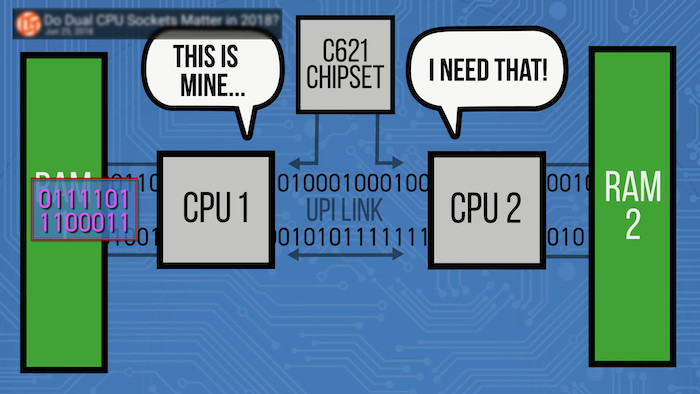
So adding a 2nd or 3rd or fourth CPU in the same motherboard won’t make much difference in the workload.
Conclusion
Long story short, The processor size stays the same because of maintaining the cost and minimizing the margin of error. And also, if the companies increase the size of the processor, they cant maintain the clock speed. So the CPU size stays the same.
So after reading the article, I’m positive that now you know what CPU size stays the same and why it cant be bigger. Also, I’ve given you some insides about the Dual-CPU system with its merits and demerits.
So If you have any questions, fill free to ask me. Thank you.

